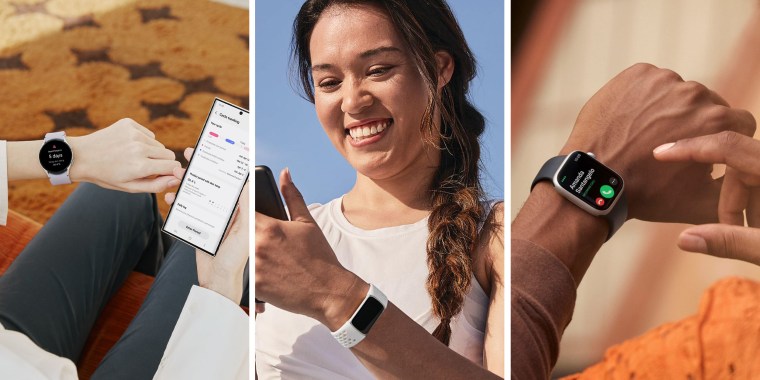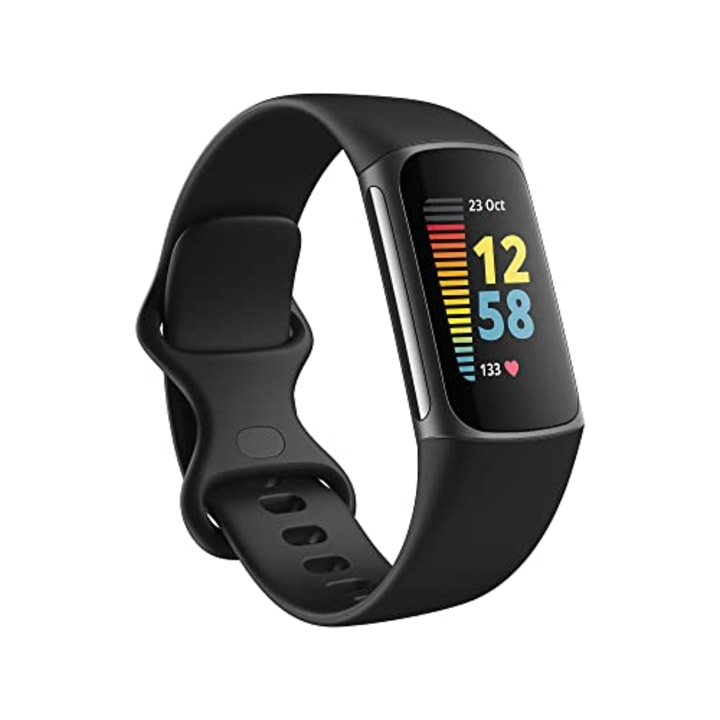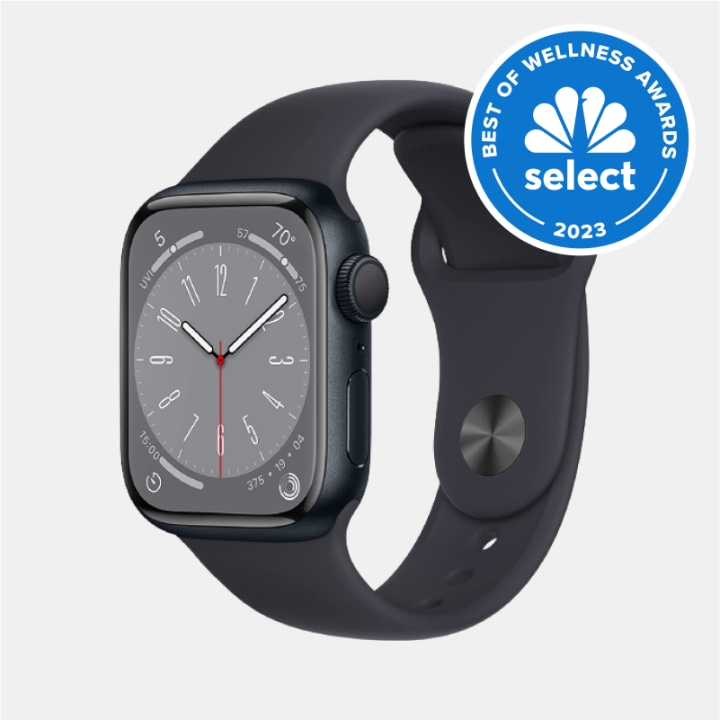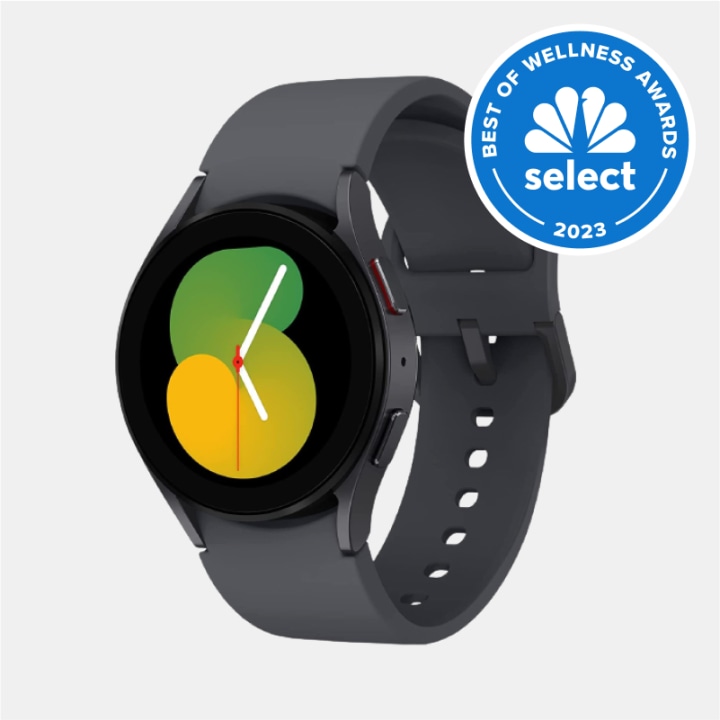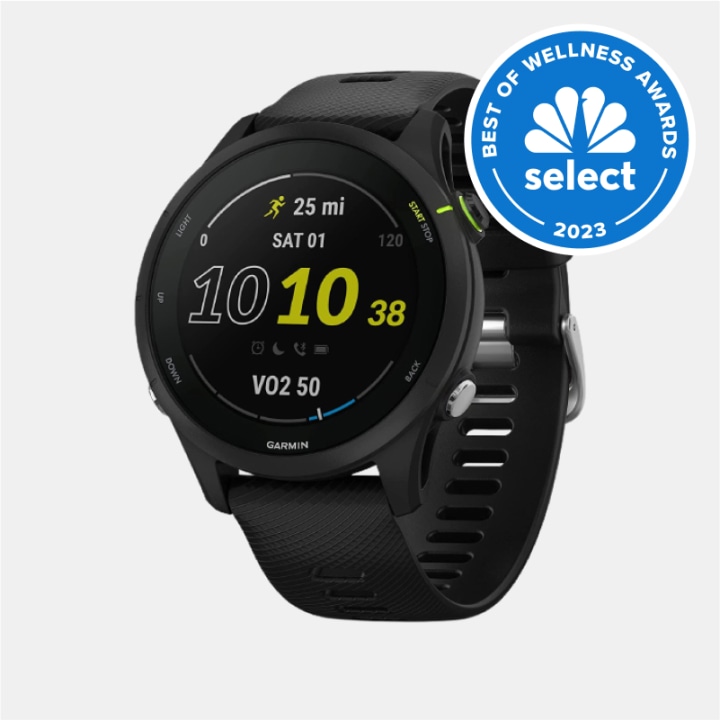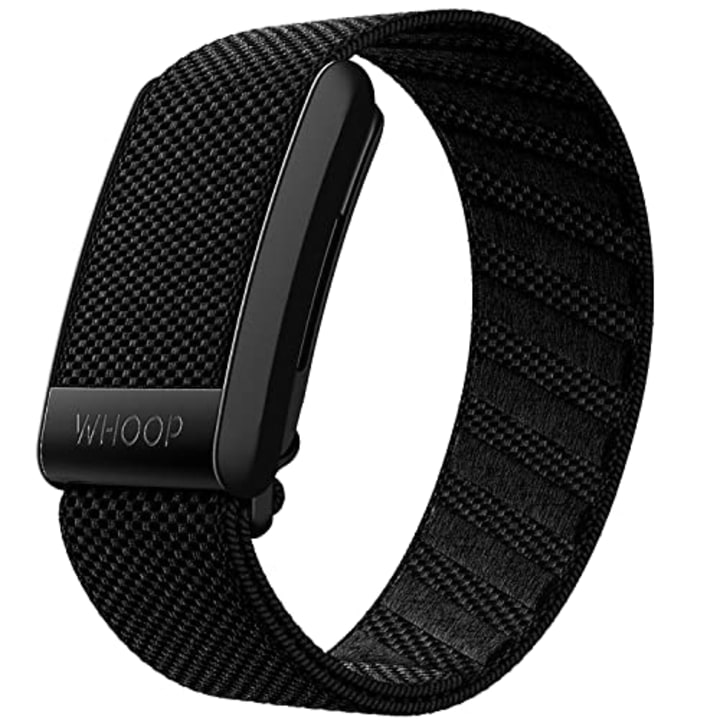Whether you are training for a marathon or working out for the first time in months, a fitness tracker can give you helpful health data. They’re incredibly advanced, with GPS tracking, heart rate monitors and workout insight tools built-in. To make finding the right fitness tracker for your lifestyle easier, we tried nearly a dozen different models and spoke with experts about what separates the best models from the rest.
SKIP AHEAD The best fitness trackers of 2023 | How to shop for a fitness tracker
Our top picks
- Best for beginners: Fitbit Charge 5
- Best for Apple users: Apple Watch Series 8
- Best for Android users: Samsung Galaxy Watch 5
- Best GPS: Garmin Forerunner 255
How we picked the best fitness trackers
Along with trying dozens of different fitness trackers, we spoke with fitness experts for shopping recommendations. Here is what we kept in mind, based on their advice:
- Comfort and wearability: A fitness tracker is only useful if you wear it. It can have the most advanced fitness tracking specs, but those specs are meaningless if you don’t regularly wear the tracker, says Dr. Koyya Lewis-Trammell, associate professor of kinesiology and health promotion at California State Polytechnic University, Pomona.
- Compatibility: Not every phone is compatible with every fitness tracker — the Apple Watch only works with an iPhone, for example. We included a variety of fitness trackers with different connectivity, so you can find a suitable option.
- Data tracking: Fitness trackers collect different kinds of biometric data, and present that data in different ways. We chose products that collect a range of fitness insights. Some track basic activity like steps and heart rate, while others display more complex analysis including workout effectiveness and body fatigue.
How we tried fitness trackers
I tried seven fitness trackers and incorporated them into my daily routine where I run and cycle outside three to four times a week in New York City. I also paid close attention to the below factors:
- GPS tracking: GPS, or Global Positioning System, is what maps your outdoor activity and enables reporting on your mileage, speed and elevation. For each watch, I noted how quickly each tracker connected to GPS and how accurate the data was.
- Comfort: I wore each tracker day and night (I even slept with them) to check if they interfered with any hand-heavy activity like cooking, cleaning, weight training or rock climbing.
- Features: Besides operating system compatibility, one of the biggest differentiators for fitness watches is their features. For this story, I paid particular attention to the sleep tracking, heart rate details and live workout stats.
- Battery life: I tried each tracker for about a week before switching to the next. Throughout that period, I paid attention to how many times I needed to charge the device during that week.
The best fitness trackers of 2023
Our top picks are a mix of expert recommendations and products our team personally tried over the course of four weeks. We chose products that come in various sizes and styles.
Best for beginners: Fitbit Charge 5
Pros: Beginner-friendly, slim, lightweight
Cons: One size, some data locked behind subscription service
Many Select team members use or have used Fitbit fitness trackers, and love them because they are easy to use and lightweight. Take the Fitbit Charge 5: it is one of the lightest, lowest-priced trackers on our list.
Despite having never used a Fitbit product before, I felt comfortable swiping through the Charge 5's touchscreen menu after only a few minutes. The screen and stats are bright, colorful and easy to navigate. It tracks basic fitness and health data like steps, heart rate, sleep quality, exercise distances and pace (if outside) and more.
Another strength of the Fitbit Charge 5 is its battery life: up to seven days if you don’t use the GPS tracking and up to five hours if you do, according to the brand. Unlike my smartphone, the Charge 5 lasted me three to five days on one charge.
The data tracking is a little less robust than some of our other picks, though. When running, the Charge 5 did not show me cadence, stride length, ground contact time and vertical oscillation — advanced metrics found on pricier options like the Apple Watch 8. The brand also locks some data insights like sleep score and daily readiness score behind its Fitbit Premium subscription plan, which costs $10 per month.
Display size(s): 26mm | Display type: Touchscreen | Weight: 15g | Battery life: Up to 7 days | Built-in GPS: Yes | Sleep tracking: Yes (not including naps) | Heart-rate monitor: Yes, with ECG | Water resistance: Yes, up to 50 meters | Works best with: Fitbit app
Best for Apple: Apple Watch Series 8
Pros: Easy-to-use, syncs seamlessly with iPhone
Cons: Short battery life
The Apple Watch Series 8 won our 2023 Wellness Award for the best fitness tracker for iPhone users, and is the go-to wearable for Kristina Jennings, a certified functional strength coach (CFSC) at Monarch Athletic Club in Los Angeles. Select manager of editorial operations Shari Uyehara, who has never owned a fitness tracker, found the Apple Watch Series 8 comfortable and easy to use. I was particularly impressed with the large always-on display and narrow bezels (the frame that borders the screen) which made it easy to read and swipe on the watch even while I was running.
It is a particularly good tracker for Apple users, since it syncs easily with iPhone apps like Health and Watch to track your fitness, health and sleep data. New to this model is cycle tracking — by adding information about your menstrual cycle, Apple’s Cycle Tracking app can help predict and alert you about your upcoming period or ovulation, according to the brand.
“You can also follow your friends and get notified when they complete activities, which can help with motivation,” says Jennings
The Series 8 can also handle many smartphone tasks: It can send texts, record voice memos, open apps, receive notifications and more. In Apple’s product lineup, it sits between the Apple Watch Ultra and the more budget-friendly Apple Watch SE in price. It comes in two sizes, 41mm and 45mm, with many band options.
Display size(s): 41mm, 45mm | Display type: Always-on touchscreen | Weight: 32g (41mm), 39g (45mm) | Battery life: Up to 18 hours | Built-in GPS: Yes | Sleep tracking: Yes (not including naps) | Heart-rate monitor: Yes, with ECG | Water resistance: Yes, up to 50 meters | Works best with: Apple iPhone
Best for Android: Samsung Galaxy Watch 5
Pros: Very comfortable, sleek design
Cons: Battery life could be better
Named the best Android fitness tracker in our Select Wellness Awards, the Samsung Galaxy Watch 5 has a sleek design, easy-to-customize screen and comfortable fit. In my experience, its circular touchscreen is lightweight, colorful and responsive. You can customize watch faces directly on the watch itself or through Samsung’s Galaxy Wearable app — I used the app to easily create multiple faces with custom stats, colors, fonts and layouts in minutes.
The watch has two buttons, which by default act as a home and a back button. (You can reprogram them to do other actions like open a specific app or show your most recently used ones.) I love physical buttons on smartwatches because touch controls are not always ideal when I’m doing outdoor activities in bad weather, like running in the rain, for example.
Like the Apple Watch Series 8, it can handle smartphone tasks including sending texts, answering calls, receiving notifications and tap-to-pay. I used it to pay for groceries and public transportation with no issues.
Display size(s): 40mm, 44mm | Display type: Always-on touchscreen | Weight: 28.7g (40mm), 33.5g (44mm) | Battery life: Up to 50 hours | Built-in GPS: Yes | Sleep tracking: Yes (not including naps) | Heart-rate monitor: Yes, with ECG | Water resistance: Yes, up to 5 feet for 30 minutes | Works best with: Samsung and Android phones
Best GPS: Garmin Forerunner 255
Pros: Accurate GPS, long battery life
Cons: No touchscreen
If outdoor fitness and sports are a common part of your daily routine, consider the Garmin Forerunner 255, winner of Select’s best fitness tracker for running and GPS. It stands out from the competition with its incredibly long battery life — I wore it for a full week and didn’t need to recharge.
When getting ready for an outdoor run or bike ride, the Forerunner 255 connected to GPS within seconds while other trackers took minutes. It has multiband GPS, which means it can communicate with two GPS satellites at the same time, leading to faster, more accurate mapping.
It also has ample fitness and training features, such as adaptive workout plans, running power data, recovery time estimates and more. I didn’t take advantage of all the tools, but a few I used daily was its morning report feature and performance condition feature. The morning report told me how well I slept, my recovery scores and suggested workouts, while the performance condition feature gave me an assessment of my pace and heart rate at the start of runs. Both helped me develop a better workout routine.
Unlike our beginners pick, the FitBit Charge 5, this watch has a serious learning curve. There is no touchscreen — you control it with the five buttons along the sides of the watch. While I enjoy the precision of using physical buttons, it took a while to get used to it, since most other fitness trackers have touchscreens.
In Garmin’s Forerunner product lineup, the Forerunner 255 sits between the premium Forerunner 955 and the lower-priced Forerunner 55.
Display size(s): 41mm, 46mm | Display type: Not touchscreen | Weight: 39g (41mm), 49g (46mm) | Battery life: Up to 14 days | Built-in GPS: Yes | Sleep tracking: Yes (not including naps) | Heart-rate monitor: Yes, no ECG | Water resistance: Yes, up to 50 meters | Works best with: Garmin app
Most comfortable: Whoop 4.0
Pros: Comfortable watch band, detailed wellness and recovery metrics
Cons: Expensive monthly subscription
For in-depth data analysis, consider Whoop 4.0, says Rhys Athayde, co-owner and director of fitness and operations of Ghost Williamsburg, a luxury gym in New York. Whoop is not a typical fitness watch. It doesn’t track step count, stairs climbed or active minutes, nor does it show the time or display notifications because it doesn’t have a screen. It is a small tracker built into a stretchy polyester and nylon band that's comfortable to wear while working out or sleeping, in my experience.
Whoop tracks metrics like heart rate, heart rate variability, blood oxygen levels, skin temperature and more. Analyzing that data, it assigns scores to your body strain, recovery and sleep through its mobile app. This showed me how hard a workout session was on my body rather than how far or fast I went. Looking at these strain, recovery and sleep metrics, I found myself thinking more about the quality of my workouts rather than the quantity.
To use the product, you have to pay for the Whoop subscription service, which is $30 per month or $239 per year. For serious athletes who love data, it is a worthwhile option to consider.
Display size(s): N/A | Display type: N/A | Weight: 18g | Battery life: Up to 5 days | Built-in GPS: N/A | Sleep tracking: Yes (not including naps) | Heart-rate monitor: Yes, with PPG | Water resistance: Yes, up to 10 meters (for 2 hours) | Works best with: Whoop app
Most minimal: Oura Ring 3
Pros: Minimal, comfortable design
Cons: Requires a subscription to access most features, not enough fitness data
For minimalists who want data analysis on basics like sleep and recovery, Athayde and Jennings recommend the Oura Ring 3. Like most of our other picks, it tracks heart rate, heart rate variability, blood oxygen levels, skin temperature and more.
The Oura Ring 3 is more for health tracking than activity tracking. The app focuses on sleep and recovery most, with accurate tracking of heart rate, body temperature, respiratory rate and more, says Athayde. But for runners, cyclists and swimmers, the Oura Ring isn’t a substitute for a true fitness watch — it cannot show you data like pace, distance or heart rate zone as you work out. For those who want informative health data without the form factor of a fitness watch, the Oura Ring is a good option.
It comes in two styles, five colors and a range of sizes. While you can use the Oura Ring without a subscription, you will only be able to access limited data solely for the current day, according to the brand. A monthly subscription costs $6 a month.
Display size(s): N/A | Display type: N/A | Weight: 4-6 grams | Battery life: Up to 7 days | Built-in GPS: N/A | Sleep tracking: Yes (not including naps) | Heart-rate monitor: Yes, with ECG | Water resistance: Yes, up to 100 meters (up to 12 hours) | Works best with: Oura app
How to shop for a fitness tracker
Beyond looking at specific features and specifications when shopping, our experts’ recommend keeping the following in mind:
Prioritize comfort
Both Lewis-Trammell and Athayde say that comfort and wearability are the most important factors of any fitness tracker.
Because trackers come in so many shapes and sizes, I recommend going in-person to try a few different models and see what feels most comfortable to you.
Athayde recommends the Oura Ring, but points out that if you don’t typically wear (or sleep in) rings, you should probably look elsewhere. Similarly, if you don’t generally wear watches, you might find a tracker like the Garmin Forerunner uncomfortable and may be better off with a smaller, lighter tracker like the Whoop. “Ultimately, you’re looking for a device you’re going to wear long term so that it can provide you with the most accurate data,” says Athayde.
Identify your goals and needs
You don’t need to be an athlete or avid gym-goer to benefit from the data fitness trackers provide, says Athayde.
Think about what metrics matter to you before looking at the price tag, and shop according to what you need. If outdoor sports are your thing, Garmin may be your best option. If you want your fitness data in addition to mobile notifications and texting, a smartwatch like the Apple Watch or Samsung Galaxy is a good fit. What’s best for you depends on your daily habits and larger goals, according to our experts.
Meet our experts
At Select, we work with experts who have specialized knowledge and authority based on relevant training and/or experience. We also take steps to ensure all expert advice and recommendations are made independently and without undisclosed financial conflicts of interest.
- Dr. Koyya Lewis-Trammell is an associate professor of kinesiology and health promotion at California State Polytechnic University, Pomona.
- Kristina Jennings is a certified functional strength coach (CFSC) at Monarch Athletic Club in Los Angeles.
- Rhys Athayde is the co-owner and director of fitness and operations of Ghost Williamsburg in New York.
Why trust Select?
Harry Rabinowitz is a reporter at Select and an avid runner and cyclist. For this piece, he interviewed fitness experts and professionals to get a better understanding of fitness trackers and the benefits of the data they can provide. He also tried seven top-rated fitness trackers and smartwatches. He spoke with other members of the Select team about their experiences with the fitness trackers they use and have used previously as well.
Catch up on Select’s in-depth coverage of personal finance, tech and tools, wellness and more, and follow us on Facebook, Instagram, Twitter and TikTok to stay up to date.
